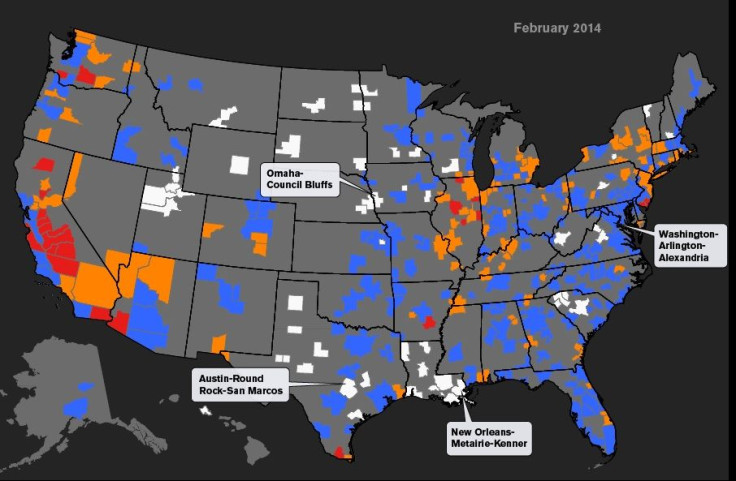Here's How The US Unemployment Rate Rose Though More People Got Jobs

There's a reason economics is called the dismal science. Sometimes it defies logic, and today's U.S. government report on U.S. labor conditions provides a good example; the economy added 209,000 new jobs in July, yet the unemployment rate ticked up to 6.2 percent.
So, what gives? The answer is actually pretty simple.
When the Labor Department collects data to compile the report, it uses two separate sets of questions and two different polling populations to reach its conclusions. The number of new jobs added is collected by asking companies about their hiring practice, while the unemployment rate is derived from data collected from households.
As the Labor Department explains the reports:
The household survey and establishment survey both produce sample-based estimates of employment, and both have strengths and limitations. The establishment survey employment series has a smaller margin of error on the measurement of month-to-month change than the household survey because of its much larger sample size. An over-the-month employment change of about 100,000 is statistically significant in the establishment survey, while the threshold for a statistically significant change in the household survey is about 400,000. However, the household survey has a more expansive scope than the establishment survey because it includes self-employed workers whose businesses are unincorporated, unpaid family workers, agricultural workers, and private household workers, who are excluded by the establishment survey. The household survey also provides estimates of employment for demographic groups.
In addition, July is typically a volatile month, with summer vacations and seasonal hiring messing with the data, and you have a pretty good answer for the apparent illogic of rising unemployment and job growth in the same time period.
"Labor force participation has not been inspiring. More Americans might start to look for work if the job market continues to improve, but this could also cause the unemployment rate to rise because of the way the statistics are gathered," Bakrate.com's Mark Hamrick said Friday.
There's also the element of whether people polled in the household survey report that they are looking for work or not. For instance, if people queried for the household survey reveal that they are out of work, but not actively pursuing a job, they are not considered unemployed. If they become more confident about job prospects before the following survey and decided to start looking for a job, they would be considered unemployed in the next survey.
"We can’t make too much out of the cases where the household and establishment surveys sometimes diverge. We know that labor force participation remains low. We also know that Americans can reasonably be expected to jump back into the labor pool if there are sustained signs of economic progress. The unintended effect of that will be to apply upward pressure on the unemployment rate as appears to be the case with July," according to Hamrick.
Many economists have expected unemployment to rise a bit once the job market starts to improve because those who had stopped looking would begin job hunting again, and fall into the above scenario.
To reach the household survey's final unemployment calculation, its economists divide the number of people actually looking for work by the size of the overall workforce.
Among the highlights of Friday's jobs report,
- Both the unemployment rate (6.2 percent) and the number of unemployed persons (9.7 million) changed little in July. Over the past 12 months, the unemployment rate and the number of unemployed persons have declined by 1.1 percentage points and 1.7 million, respectively.
- The civilian labor force participation rate, at 62.9 percent, changed little in July. The participation rate has been essentially unchanged since April. The employment-population ratio, at 59.0 percent, was unchanged over the month but has edged up by 0.3 percentage point over the past 12 months.
© Copyright IBTimes 2024. All rights reserved.






















